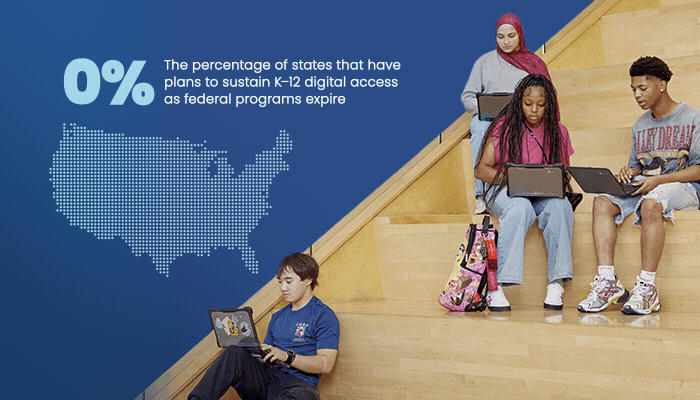Educator preparation is another area where districts can get ahead of digital equity challenges.
“We need to be preparing futureeducators and administrators to identify and address digital divide barriers, including affordable broadband, in-home and at school,” says Robert McLaughlin, executive director for the National Collaborative for Digital Equity.
“We also need to be training educators to determine their students’ home access status without fatally embarrassing them,” he says. “This is an indirect contributor to the digital divide.”
Building a Free Mesh Network in East San Jose, Calif.
East Side Union High School District, located in East San Jose, Calif., serves more than 24,000 students across 19 high schools. Despite its proximity to Silicon Valley, the district faces the same digital divide challenges as other school districts.
To address the lack of at-home connectivity among the economically disadvantaged students in the district, ESUHSD came up with a radical idea: Build a mesh network that would extend the district network and deliver free Wi-Fi access to the student neighborhoods where it was most needed.
“Our goal was to provide Wi-Fi for our financially impacted students,” says Randy Phelps, CTO for ESUHSD. “We began designing with the city’s engineers and a wireless integrator and quickly determined a mesh network would be best. The mesh network worked with the city network — using the power poles, light poles, buildings, you name it — and connected where we have fiber connections.”
DIG DEEPER: Strong lifecycle management plans support one-to-one success.
The district had a strong and effective one-to-one program in place. But Phelps understood that in-home connectivity was needed to deliver equitable educational value to all of its students. Phelps and his team focused their efforts on extending Wi-Fi access into eight economically disadvantaged neighborhoods, starting with the James Lick neighborhood, which presented the most geographic and technical challenges.
“We had to solve every single engineering problem there,” Phelps says. “But once we got those solved, the rest of the neighborhoods would be easy. We got it done in about eight months.”
The district’s creative approach to financing the mesh network allowed the project to move forward quickly. The district passed a technology-only bond with 77% approval among voters. This financing, along with a strong relationship with T-Mobile and a $1 million grant from Sprint, provided the initial support to begin. Since then, ESUHSD has continued to win public support for technology-supporting bonds.
“We built the network so we could sustain it for 12 years, initially,” Phelps says. “Then, two years ago, we passed a bond extension. Our community Wi-Fi is safe until around 2040 now. That bond also pays for our student machines, our teacher machines and lots of our software. We can offer all kinds of great programs that we could not if we were just relying on general fund dollars.”
EXPLORE: Strategically optimize your device ecosystem.
Phelps’ advice for his educational technology peers is to not be afraid to tackle big projects and to always keep the end goal in mind.
“You’re providing something as valuable as water and power,” he says. “If students are not on the internet, they are not living in the same world as everyone else. To have a real device where you have access to your schoolwork and you can work whenever you want to — students learn new things. That’s our motivation.”
Murray City Schools Solves the Challenge of In-Home Connectivity
When Jason Eyre, technology coordinator for Murray City School District, joined the district, he was already thinking about a problem that many one-to-one device programs face: how to support in-home learning. He recognized that there was a digital equity challenge in the district, which serves 6,000 students in Salt Lake County, Utah. Many of the students come from low-income households or large families with crowded Wi-Fi networks.
“There were a lot of students that were struggling economically, and one of the decisions they had to make was whether they had internet at their house or not,” explains Eyre. “Although we have a variety of internet providers here, the pricing really wasn’t affordable. That economic barrier was what started this journey for us.”














